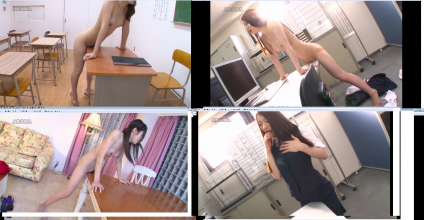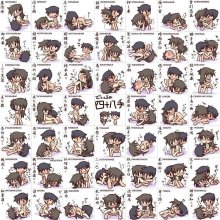What is your favourite JAV sex position?
- Thread starter Muz1234
- Start date
-
Akiba-Online is sponsored by FileJoker.
FileJoker is a required filehost for all new posts and content replies in the Direct Downloads subforums.
Failure to include FileJoker links for Direct Download posts will result in deletion of your posts or worse.
For more information see this thread.
You are using an out of date browser. It may not display this or other websites correctly.
You should upgrade or use an alternative browser.
You should upgrade or use an alternative browser.
I think you gotta learn the Kanji if you wanna know the real meaning of the position. For example, 押し車, oshiguruma, 押, means push, 車, means vehicle, so together, it means pushing vehicle or walker, I found that from Google translator.
Of course I got these results, too. The problem is: What does "pushing vehicle" or "walker" mean? As far as I know these are not real native English terms for positions or techniques. And I'm sure that there are such terms.I think you gotta learn the Kanji if you wanna know the real meaning of the position. For example, 押し車, oshiguruma, 押, means push, 車, means vehicle, so together, it means pushing vehicle or walker, I found that from Google translator.
The "I am horny position"!View attachment 174110
I would be sucking on the corner off those table when they're done lol.
Used to be reverse cowgirl for a long time. The wide open legs and full frontal shots are so unabashed, it's just beautiful.
Then it was sitting up missionary, or Dakijizou as shown in the charts, because its so intimate and seems like both parties are initiating, unlike when one is lying down.
Lately however its been normal doggie, I think because it displays dominance.
Of course I got these results, too. The problem is: What does "pushing vehicle" or "walker" mean? As far as I know these are not real native English terms for positions or techniques. And I'm sure that there are such terms.
I don't know how to answer this. Maybe in English it is different. Just find it in Western Edition sex position or something. But if you Google Image the Japanese term, there are image of the position, which is nice though.
For me it is standing doggystyle=especially when the guy is banging her like crazy and she is screaming like mad!
Of course I got these results, too. The problem is: What does "pushing vehicle" or "walker" mean? As far as I know these are not real native English terms for positions or techniques. And I'm sure that there are such terms.
You need to be pretty fluent with Japanese (not just an advanced learner) and English (also not ESL) to translate there successfully. I know Chinese (kanji) but don't know Japanese. Still in this case I happen to know the answer:
"押し車" is the wheelbarrow position in English. In addition:
Iwashimizu is Rock Clear Water (mountain spring?)
Shishimai is Lion Dance
Karigakubi is Goose Head
Takarabune is Treasure Boat
Chidori is Plover (Thousand Bird)
Chidori no Kyoku is Plover's Song
Miyama is Deep Mountain (remote high mountain)
Turibashi is Suspension Bridge
Ukibashi is Floating Bridge
How many different positions have you practiced?
You need to be pretty fluent with Japanese (not just an advanced learner) and English (also not ESL) to translate there successfully. I know Chinese (kanji) but don't know Japanese. Still in this case I happen to know the answer:
"押し車" is the wheelbarrow position in English. In addition:
Iwashimizu is Rock Clear Water (mountain spring?)
Shishimai is Lion Dance
Karigakubi is Goose Head
Takarabune is Treasure Boat
Chidori is Plover (Thousand Bird)
Chidori no Kyoku is Plover's Song
Miyama is Deep Mountain (remote high mountain)
Turibashi is Suspension Bridge
Ukibashi is Floating Bridge
How many different positions have you practiced?
This is a nice translation.
Lotus and girl on top, but with her laying on top of me
It would be nice if you post a picture or screenshot in JAV of that position.
i would have to say my favorite position is cow girl/girl on top because you get to see the girls boobs bouce around and you can touch her tits.
I found this picture which summarize all the different position. I like tachikanae though.
View attachment 174348

Tachikanae






